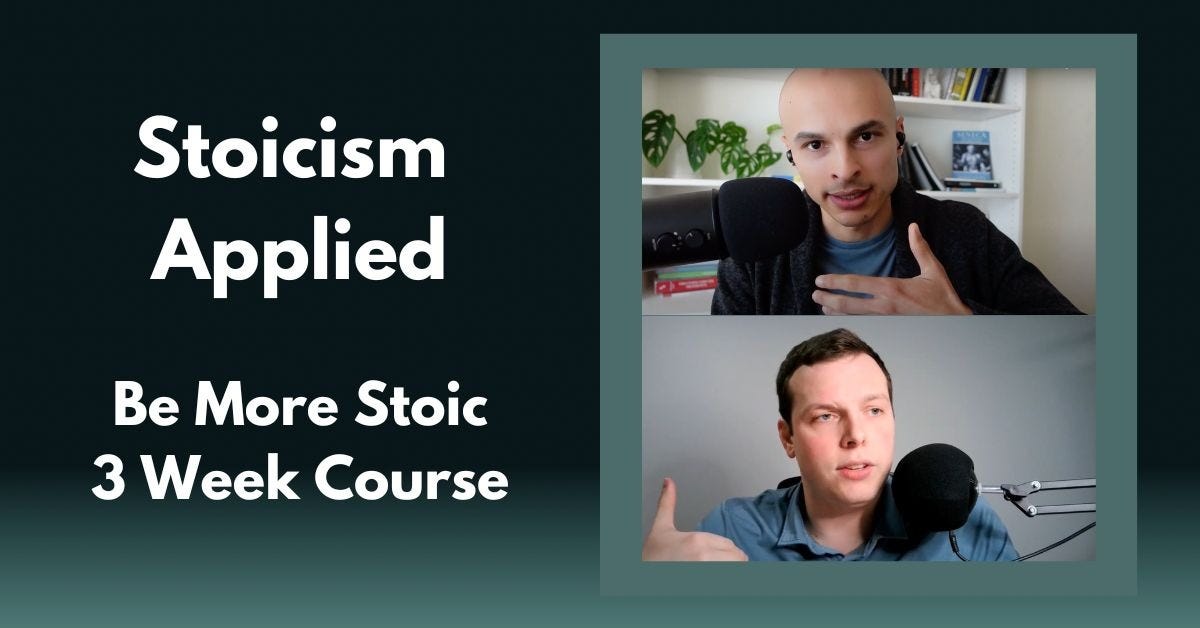What Stoics Can Learn From Buddhists
The first and second arrow
Welcome to The Stoa Letter, the newsletter on Stoic theory and practice.
Every week we share two emails to help you build resilience and virtue with ancient philosophy. Each email includes one meditation on Stoic theory, one action to do in order to become more Stoic, and links to the best resources we’ve found.
🏛️ Theory
Often, we suffer twice as much as we need too.
There’s a Buddhist parable about a man walking through a forest. Suddenly, an arrow whirs through the air and strikes him. The physical pain is immense. A chorus of thoughts enter his head and cause him more hurt:
What is going to happen to me?
What will happen to my family?
How can I live in a world where I am shot at like this?
I will die.
My family will no longer flourish.
This world is worthless.
If these thoughts spur action, they will have served their purpose. But, as it happens, the wound was manageable. Nonetheless, these thoughts become unpleasantly louder.
In this way, the man strikes himself with a second arrow.
Pain is unavoidable. Most of us will avoid physical arrows, but we cannot evade all the tragedies of life. Yet we do not need to expose ourselves to further suffering. We can experience pain and tragedy as they are – as nothing more or less than painful and tragic. But we do not need to add our own stories to those experiences.
This second arrow involves our judgments. Ideas like "I cannot accept the pain in the world", "I cannot have a good life", and "I will always be unhappy" make for sharp arrowheads. All of these thoughts are natural, but we only hurt and delude ourselves when we allow them to move deep into us.
As Epictetus said in a dialogue with his student:
He was sent to jail.
What happened?
He was sent to jail.
But "He is unhappy" is added by oneself.
Epictetus, Discourses, 3.8.5
🎯 Action
Notice if you are struck by any second arrows today.
🎺 Stoicism Applied – The Course
Michael Tremblay and I running a live course this month!
Come learn about and practice Stoicism with us.

Stoicism Applied by Caleb Ontiveros and Michael Tremblay on Maven
Build resilience and virtue with ancient philosophy.
https://maven.com/stoa/stoicism-applied

🔗 Resources
💬 The source of the story is here. Part of the dialogue reads:
When touched with a feeling of pain, the uninstructed run-of-the-mill person sorrows, grieves, & laments, beats his breast, becomes distraught. So he feels two pains, physical & mental. Just as if they were to shoot a man with an arrow and, right afterward, were to shoot him with another one, so that he would feel the pains of two arrows, in the same way, when touched with a feeling of pain, the uninstructed run-of-the-mill person sorrows, grieves, & laments, beats his breast, becomes distraught. So he feels two pains, physical & mental.
Sallattha Sutta 36:6
🏹 Another archery metaphor: the Stoic archer.
What do the best archers pursue? They want to be excellent archers. That is the target. The fundamental goal isn’t to feel like an excellent archer. It’s not “I want to win this year’s archery contest.” Their purpose is not subject to internal whims or external fortune. It is simply the desire to be excellent.
Perhaps archery metaphors are all you need.
🎧️ Listen to our last podcast on Buddhism 101 here:

What Buddhism is and why it matters.
stoameditation.com/blog/buddhism-101-episode-81

We have upcoming conversations with Buddhist scholars and practitioners in the works. If you have any recommendations reach out.
What did you think about today's letter?
🏆️ Share The Stoa Letter
If you find what we’re doing useful, please share it. Just have people sign up with your link below.
Share The Stoa Letter
{{rp_personalized_text}}
Or copy and paste this link to others: {{rp_refer_url_no_params}}
Get hundreds of Stoic meditations and lessons with the Stoa app (free download)

